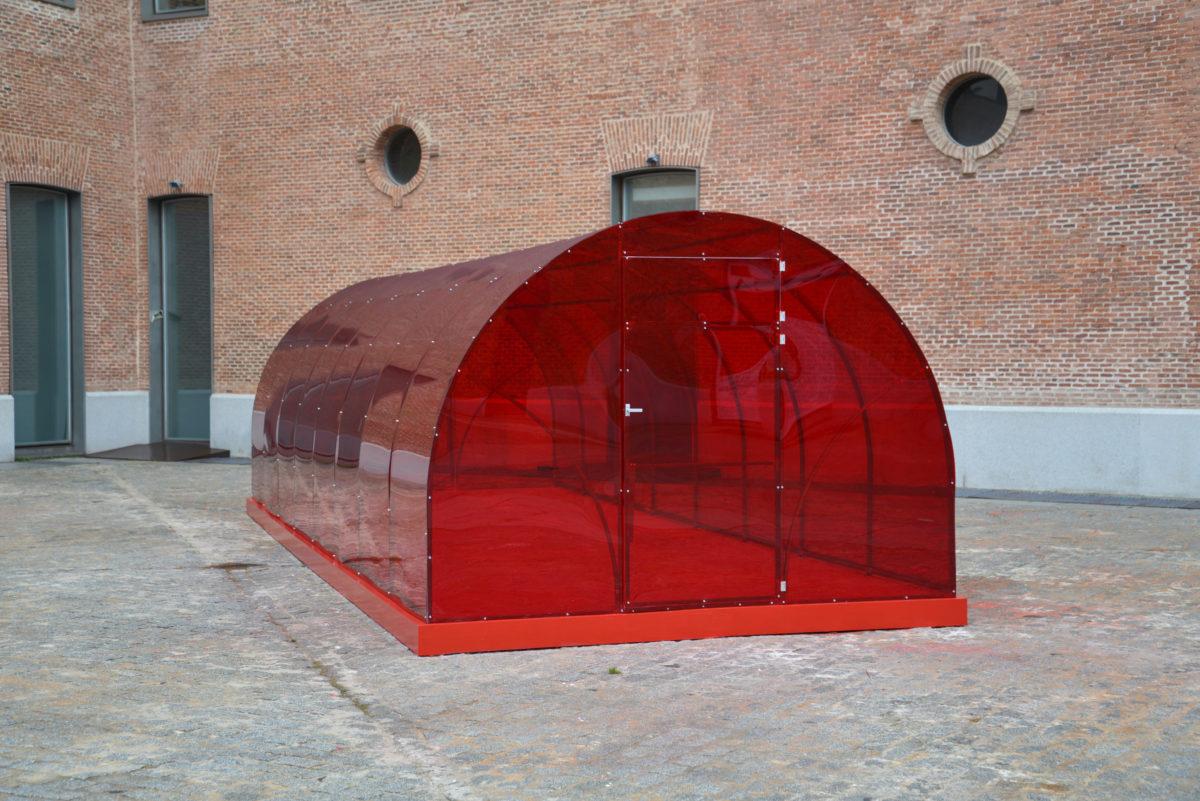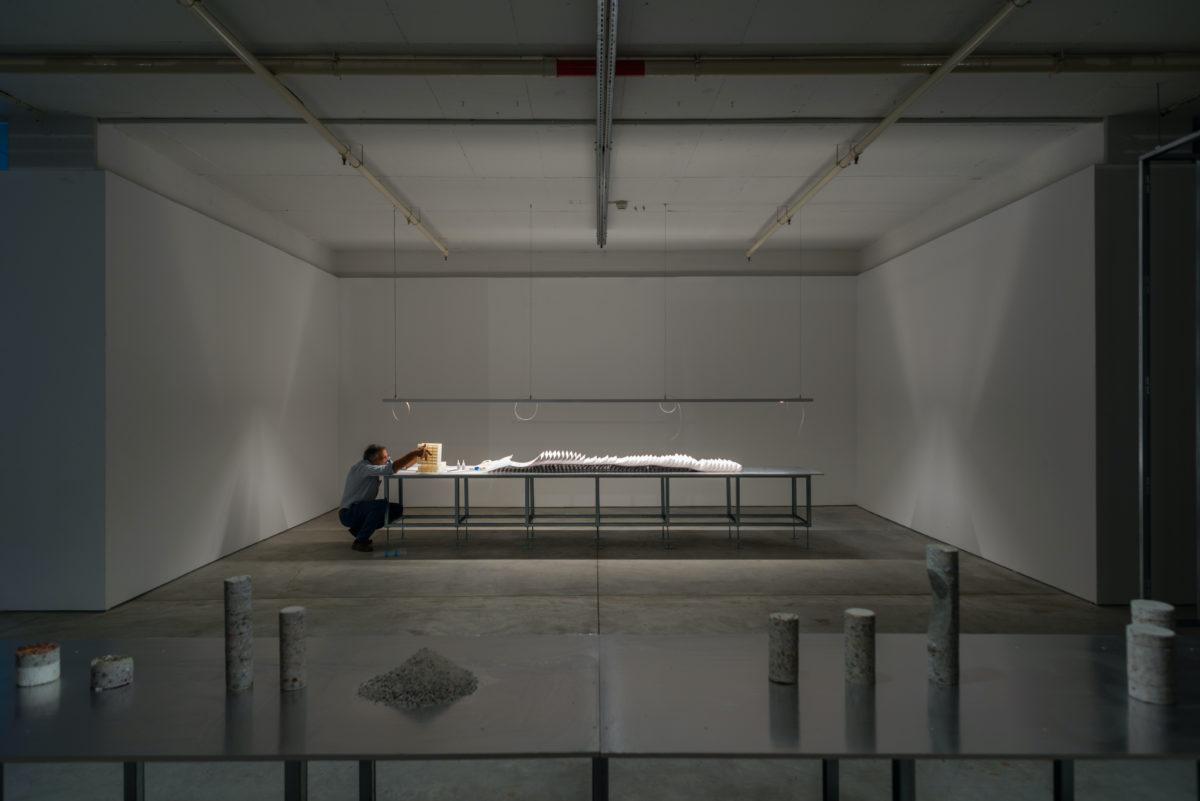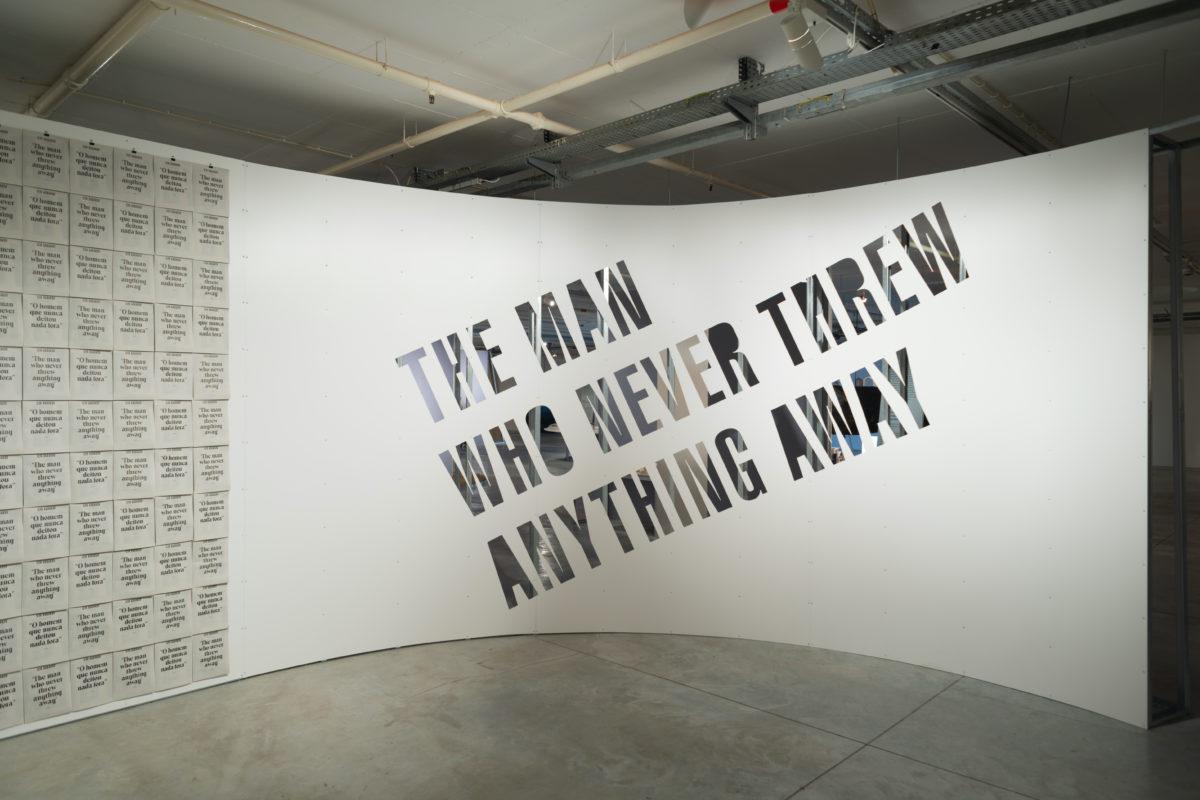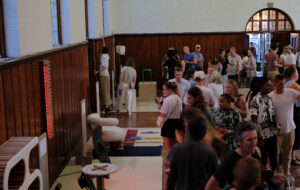For the sixth edition of Lisbon Architecture Triennale 2022, the title, Terra (or Earth) is a call to action inspired by shared local insights from around the globe
 Photography by Patrick Hamilton featuring his work El invernadero rojo (The Red Greenhouse), 2021
Photography by Patrick Hamilton featuring his work El invernadero rojo (The Red Greenhouse), 2021
Words by Will Jennings
Architecture exhibitions are scattered across Lisbon, each with a specific curatorial team and overseen by chief-curators Cristina Veríssimo and Diogo Burnay. But the architecture within the sixth edition of Lisbon Architecture Triennale does not profile shiny and skyscraping starchitecture, instead seeking to interrogate the physical, cultural, and social components which jigsaw together into our built landscapes.
It’s hoped that by interrogating the elemental parts we can rediscover modes of designing and making, approaches needed to tackle numerous crises the world faces. Energy, labour, community, waste, geology, migration, and water are all picked across numerous completed projects, experimental processes, and progressive ideas within the distinctly curated and designed exhibitions.
Another recurring material, as the Triennale’s overarching title Terra suggests, is earth – both its ownership and use as architectural material. In Retroactive at MAAT, curated by Loreta Castro Reguera, José Pablo Ambrosi, co-founders of Mexican practice Taller Capital, the exhibition design even utilises earth – soil filling felt material forming display and projection surfaces.
 Photography by Sara Constança featuring Terra Cycles
Photography by Sara Constança featuring Terra Cycles
The show explores notions of retroactively repairing urban realms through community and architectural interventions, featuring a number of models including a beautiful wooden construction illustrating fragments of South American riparian and landscape projects, inviting through a modelled proximity utopian spaces of shared reimagination and reengagement.
A room of clashing, cacophonous videos summoned the feeling of a city, each film exploring themes – migration, violence, sanitation, and so on. In an adjacent room, community-led solutions were explored in more detail: the social resilience of an urban village in Baishizou, China, as skyscrapers erupt on its four sides; a circular economy of wetlands and sewer waste in East Kalkota; and the emerging urban park of Tempelhof Airport in Berlin.
Visionaries, an exhibition in Culturgest, allows visitors to discover visionary architectural propositions which speak to future conundrums. However, there is no Le Corb or Bucky Fuller, the curation of works presents a plurality and global breadth of visionary ideas which may support a radical future. Roger Anger’s Indian city of Auroville is presented, alongside possible futures for the as-yet incomplete urban masterplan.
 Photography by Sara Constança featuring Terra Cycles
Photography by Sara Constança featuring Terra Cycles
The work of Dutch ecclesiastic architect Dom Hans van der Laan is explored through beautiful drawings and film of Roosenberg Abbey, alongside his creation of a monk’s robe and explanation of the mathematical system underpinning all his designs. MVRDV’s provocative suggestion to lift Eindhoven’s cathedral several storeys into the sky, inserting social and civic functions within, is playfully presented.
Lisbon Triennale also puts emphasis on engaging and involving academia and students of architecture and adjacent courses worldwide. Each exhibition includes speculative student projects and research. These additions offer valuable insight into the minds of the generation who will inherit – and hopefully solve – the anthropocenic issues we collectively face.
Exhibiting architecture is no easy task, especially for a Triennial seeking to speak to a general citizenship as much as learned architectural visitors. Architectural exhibitions of works so deeply rooted in research and academic rigour can often feel like research written onto a wall, bogged down in dry explanation rather than allowing ideas to present through the craft of curation. The final two exhibitions of this Triennale, we see the best and worst of architecture exhibition communication.
 Photography by Sara Constança featuring Terra Independent Projects Lodgers
Photography by Sara Constança featuring Terra Independent Projects Lodgers
Multiplicity, in the National Museum of Contemporary Art – a venue where the average visitor might be seeking visual and playful engagement – comprises several units of drawers containing seventeen bespoke books, each deeply engaging with a design project.
The selection of projects is excellent, featuring genuinely bottom-up socially engaged initiatives from the simplicity of a Friendship Bench as a space to offer mental health support in Zimbabwe and Community Fridges in New York, to more complex architectural solutions such as Dark Matter Labs’ Wiki House offering an open-sourced, 3D-printed flatpack housing – a richness of ideas which only makes the final exhibition format more infuriating.
The only way a visitor can engage with the ideas is to stand up for hours in a gallery of minimal visual decoration to read the seventeen separate books – an act no visitor will have the time or energy to do. This is an exhibition curated by two editors who have created a walk-in publication, and it is crying out for the hand of an artist or curator to shape it into a visual project.
 Photography by Sara Constança featuring Terra Cycles
Photography by Sara Constança featuring Terra Cycles
However, Cycles at Garagem Sul is a triumph of playful yet richly explained engagement of architectural issues to a general audience. In a display designed by rar.studio with two curators, art curator Pamela Prado and architect Pedro Ignacio Alonso, the open-plan exhibition hall is packed with intriguing and textured fragments.
These include prototypes of earth plaster from BC architects & studies & materials; experimental thatched walls from CINARK in Copenhagen; and Bellastock’s piles of stock materials ready for re-use, with bricks, doors, stone, nails, and tiles all ready for a circular economy of material.
At the back of the room a pile of shredded cork acts as a giant piece of punctuation in the space. Part of Lara Almarcegui’s research on natural materials, it’s a vast image to encounter, bringing home the sublime and powerful nature of extractive industries. As one of the many elemental components of Earth – both natural and human – explored across the Triennale, the cork is a reminder of the history and possible futures of our man-affected natural environments.
Get a curated collection of design and architecture news in your inbox by signing up to our ICON Weekly newsletter
















